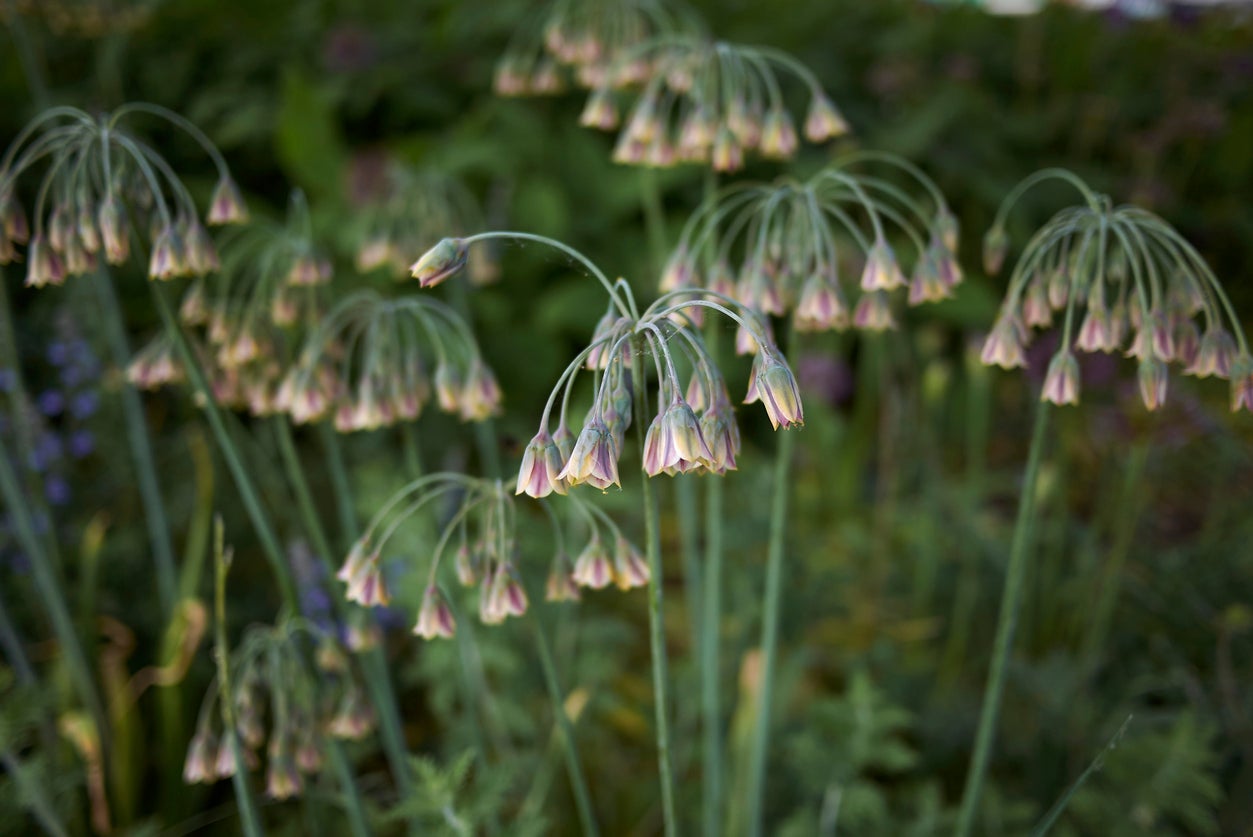What Are Nectaroscordum Lilies – Learn How To Grow A Honey Lily Plant


A few honey lily bulbs add a spectacular focus to a flower bed. This is a unique kind of bulb many gardeners have never seen. It grows tall and produces a cluster of delicate, pretty flowers. Growing honey lilies is no more difficult than your other fall bulbs, so consider adding this unusual plant to your list this year.
What are Nectaroscordum Lilies?
Honey lily (Nectaroscordum siculum) have many names including Sicilian honey garlic or Sicilian honey lily plants, and they are not often seen in spring bulb beds.
They’re worth tracking down, though, as you will get some showy flowers with these bulbs. Honey lilies grow up to four feet (1.2 m.) tall and have clusters of small flowers at the top. Each little bloom is a pretty shade of purple to green with white edging the petals.
As one of its many names suggests, honey lily is actually related to the Allium family, including garlic. If you crush the leaves, you’ll notice the relationship right away as the aroma of garlic becomes obvious.
How to Grow a Honey Lily
Growing honey lilies is similar to growing any other bulb plant. They grow readily in soil that drains well and is moderately fertile. These bulbs will tolerate drought, although standing water will be destructive, and they can grow in full sun but also partial shade.
Plant these bulbs in the fall and cluster them so that you have five to seven bulbs in one spot. This will provide the best visual impact. They grow tall, so plant Nectaroscordum bulbs where they won’t overshadow your shorter flowering daffodils and tulips. A cluster of honey lilies is a great anchor for the center of a bed or against a fence or other barrier.
Once your honey lilies are in the ground, expect them to emerge in spring and bloom in late spring or early summer. Continued Nectaroscordum bulb care is minimal. In fact, they won’t need much maintenance at all, just an annual cleanup, and they should keep coming back for about ten years.
Sign up for the Gardening Know How newsletter today and receive a free copy of our e-book "How to Grow Delicious Tomatoes".

Mary Ellen Ellis has been gardening for over 20 years. With degrees in Chemistry and Biology, Mary Ellen's specialties are flowers, native plants, and herbs.